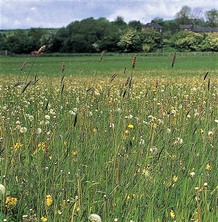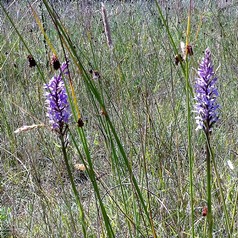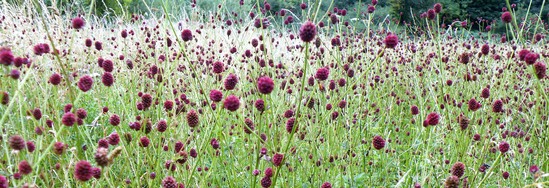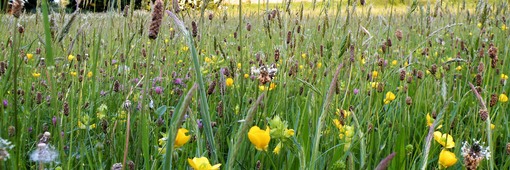

Biodiversity
Action
Plan
Pye Flatts Meadows SSSI near Hoylandswaine and Spring, Alderman’s Head and Cox Croft Meadows SSSI, above Langsett, are the most notable examples of species-rich Neutral Grassland in Barnsley. Others are found on the slopes and valleys of the Dearne, Dove, Little Don and Don rivers and their tributaries.
In non-agricultural settings, species-rich Neutral Grassland can be spotted in church yards, recreational sites, roadside verges etc.
The soils on which Neutral Grassland is found are generally quite deep and fertile so many areas of this priority habitat have been taken for ploughing and cultivation. Those that remain are localised, small and fragmented.
For more information on Neutral Grassland follow these links:
Priority habitat details
Unimproved and semi-improved Neutral Grassland is a UK BAP broad habitat category.
Neutral Grassland [Lowland Meadow] is a national priority habitat, UKHab category g3a.
It can be seasonably inundated when on floodplains.
Natural England identifies neutral grassland with at least two frequent and two occasional examples from a list of 43 wildflowers as priority habitat.
To be in favourable condition it should be species-rich and have broadleaved plant coverage of 30-40% or more.
Floodplain Meadow has at least one frequent example of nine wildflowers typical of seasonally inundated grassland, and three occasional wildflowers from the neutral grassland list
Such grassland s quite scarce and under threat in Barnsley, as well as nationally. See Sites
Neutral Grassland is a local priority habitat because of this scarcity, the species it supports and the opportunities for its conservation.
Unimproved and semi-improved Neutral Grassland are identified in Phase 1 habitat surveys.
There are 3 National Vegetation Classification (NVC) categories for Neutral Grassland priority habitat in Barnsley.
MG1 Oat-grass meadow
MG4 Burnet meadow
MG5 Knapweed meadow.

Neutral Grassland or Lowland Meadow. A colourful wildflower sward in summer, heavily used by insects such as bees and butterflies, arises from the high proportion of broad leaved plant species in unimproved (or sometimes semi-improved) Neutral Grasslands.
These lowland meadows and pastures are important habitats for Skylark, Lapwing and a number of other farmland birds.
Neutral Grassland can have a rich array of fine grasses and flowering plants, at times with a profusion of Common Knapweed or Great Burnet.
Ox-Eye Daisy, Hawkbits, Cat’s Ear, Dandelions, Meadow Buttercup, Self Heal, Red Clover, Bird’s Foot Trefoil, vetches, Lady’s Bedstraw, Meadowsweet, Yellow Rattle and orchids, stand out in a colourful mix. Whilst Adder’s Tongue Fern, Quaking Grass, Ribwort plaintain and Common Sorrel add interest. Cowslip can provide a colourful display in Spring.

Species-rich Neutral Grassland is found on alluvial or shale soils where meadows and pastures are managed traditionally by mowing and grazing later in the year after flowering plants have seeded.


Neutral Grassland